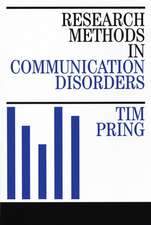Comparative Placentation: Structures, Functions and Evolution
Autor Peter Wooding, Graham Burtonen Limba Engleză Paperback – 2 noi 2014
| Toate formatele și edițiile | Preț | Express |
|---|---|---|
| Paperback (1) | 1791.02 lei 43-57 zile | |
| Springer Berlin, Heidelberg – 2 noi 2014 | 1791.02 lei 43-57 zile | |
| Hardback (1) | 1797.24 lei 43-57 zile | |
| Springer Berlin, Heidelberg – 19 aug 2008 | 1797.24 lei 43-57 zile |
Preț: 1791.02 lei
Preț vechi: 1885.28 lei
-5% Nou
Puncte Express: 2687
Preț estimativ în valută:
342.72€ • 358.72$ • 285.24£
342.72€ • 358.72$ • 285.24£
Carte tipărită la comandă
Livrare economică 31 martie-14 aprilie
Preluare comenzi: 021 569.72.76
Specificații
ISBN-13: 9783642446801
ISBN-10: 3642446809
Pagini: 316
Ilustrații: XI, 301 p.
Dimensiuni: 155 x 235 x 17 mm
Greutate: 0.49 kg
Ediția:2008
Editura: Springer Berlin, Heidelberg
Colecția Springer
Locul publicării:Berlin, Heidelberg, Germany
ISBN-10: 3642446809
Pagini: 316
Ilustrații: XI, 301 p.
Dimensiuni: 155 x 235 x 17 mm
Greutate: 0.49 kg
Ediția:2008
Editura: Springer Berlin, Heidelberg
Colecția Springer
Locul publicării:Berlin, Heidelberg, Germany
Public țintă
ResearchDescriere
Science produces fascinating puzzles: why is there such a range of placental structures when other mammalian organs are so structurally uniform ? Why and how did the different placental structures evolve ? Comparative placental studies can facilitate the identification of the common factors in placental growth, differentiation and function and their relevance to possible evolutionary pathways. Comparative Placentation is the only book presenting up-to-date data illustrating the great variety of structure but uniform function of vertebrate placentas from fish to man. This information is essential for selection of suitable models to investigate particular practical problems of impaired or anomalous growth in human and animal placentation. The unique collection of the best light and electron micrographs from the last thirtyfive years which precisely illustrate the structural range in each taxon, make the book the most authoritative publication in this field and a vital source of information for anyone interested on reproductive physiology, anatomy and medicine.
Cuprins
Placentation Fundamentals.- Implantation, Maternofetal Exchange and Vascular Relationships.- Fish, Amphibian, Bird and Reptile Placentation.- Monotreme and Marsupial Placentation.- Eutheria: Epitheliochorial Placentation Pig and Horse.- Synepitheliochorial Placentation : Ruminants (Ewe and Cow).- Endotheliochorial Placentation : Cat, Dog, Bat.- Haemochorial Placentation: Mouse, Rabbit, Man, Apes, Monkeys.- Placental Immunology, Viviparity, Evolution.- Hybridisation, Cloning and Fetal Origins of Adult Disease.
Textul de pe ultima copertă
Science produces fascinating puzzles: why is there such a range of placental structures when other mammalian organs are so structurally uniform ? Why and how did the different placental structures evolve ? Comparative placental studies can facilitate the identification of the common factors in placental growth, differentiation and function and their relevance to possible evolutionary pathways. Comparative Placentation is the only book presenting up-to-date data illustrating the great variety of structure but uniform function of vertebrate placentas from fish to man. This information is essential for selection of suitable models to investigate particular practical problems of impaired or anomalous growth in human and animal placentation. The unique collection of the best light and electron micrographs from the last thirtyfive years which precisely illustrate the structural range in each taxon, make the book the most authoritative publication in this field and a vital source of information for anyone interested on reproductive physiology, anatomy and medicine.
Caracteristici
The only concise presentation at present of the structural variety of vertebrate placentas and coherent discussion of how and why this range evolved
Provides the unique collection of the best Light and Electron micrographs from the last 35 years which precisely illustrate the structural range in each vertebrate taxon
Provides the unique collection of the best Light and Electron micrographs from the last 35 years which precisely illustrate the structural range in each vertebrate taxon











